Hernan Carrillo
Analysis of Different Losses for Deep Learning Image Colorization
Apr 06, 2022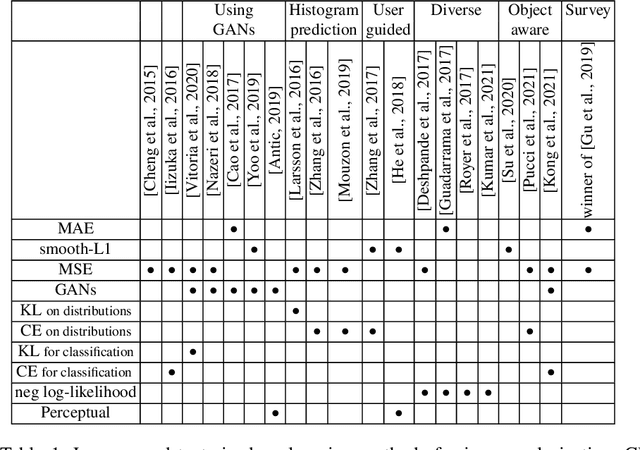
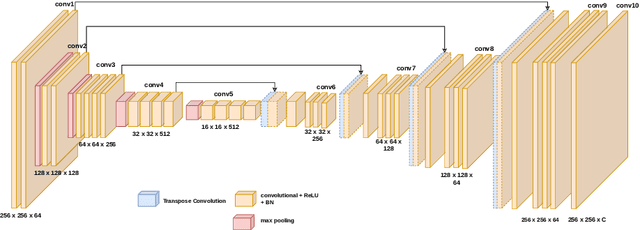
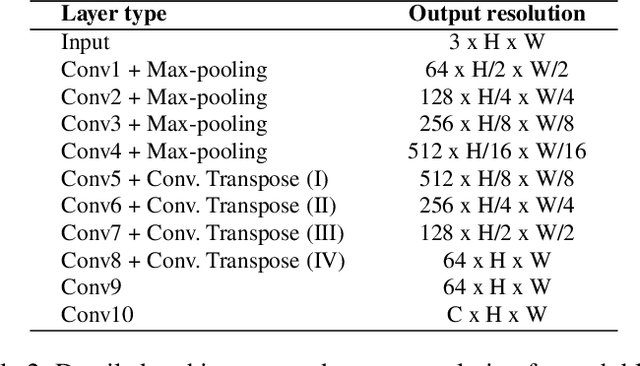
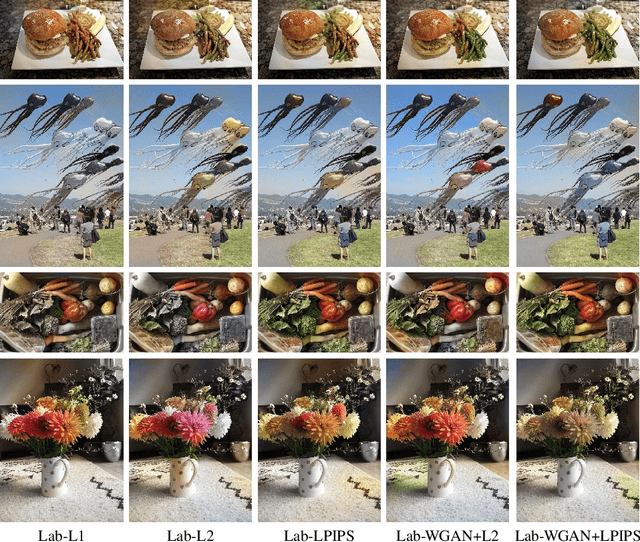
Abstract:Image colorization aims to add color information to a grayscale image in a realistic way. Recent methods mostly rely on deep learning strategies. While learning to automatically colorize an image, one can define well-suited objective functions related to the desired color output. Some of them are based on a specific type of error between the predicted image and ground truth one, while other losses rely on the comparison of perceptual properties. But, is the choice of the objective function that crucial, i.e., does it play an important role in the results? In this chapter, we aim to answer this question by analyzing the impact of the loss function on the estimated colorization results. To that goal, we review the different losses and evaluation metrics that are used in the literature. We then train a baseline network with several of the reviewed objective functions: classic L1 and L2 losses, as well as more complex combinations such as Wasserstein GAN and VGG-based LPIPS loss. Quantitative results show that the models trained with VGG-based LPIPS provide overall slightly better results for most evaluation metrics. Qualitative results exhibit more vivid colors when with Wasserstein GAN plus the L2 loss or again with the VGG-based LPIPS. Finally, the convenience of quantitative user studies is also discussed to overcome the difficulty of properly assessing on colorized images, notably for the case of old archive photographs where no ground truth is available.
Influence of Color Spaces for Deep Learning Image Colorization
Apr 06, 2022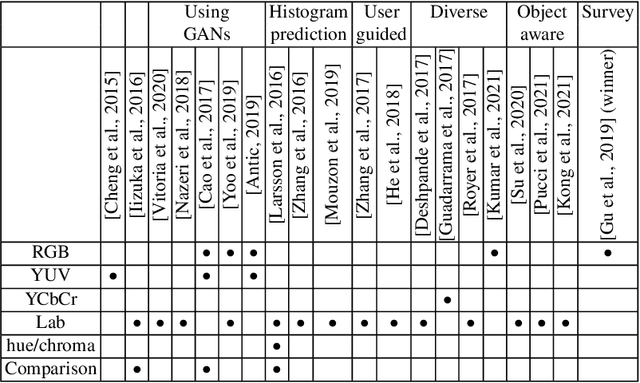
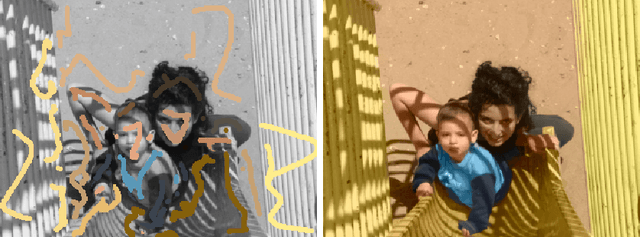
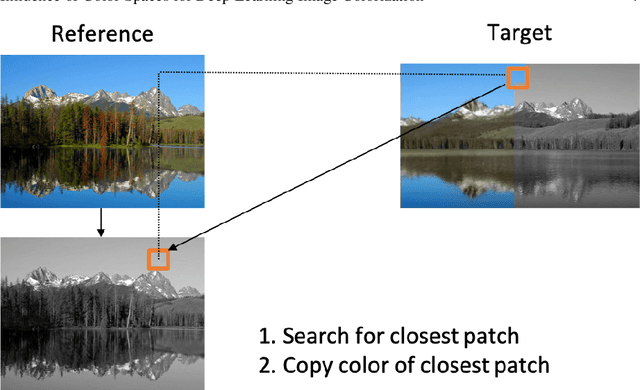
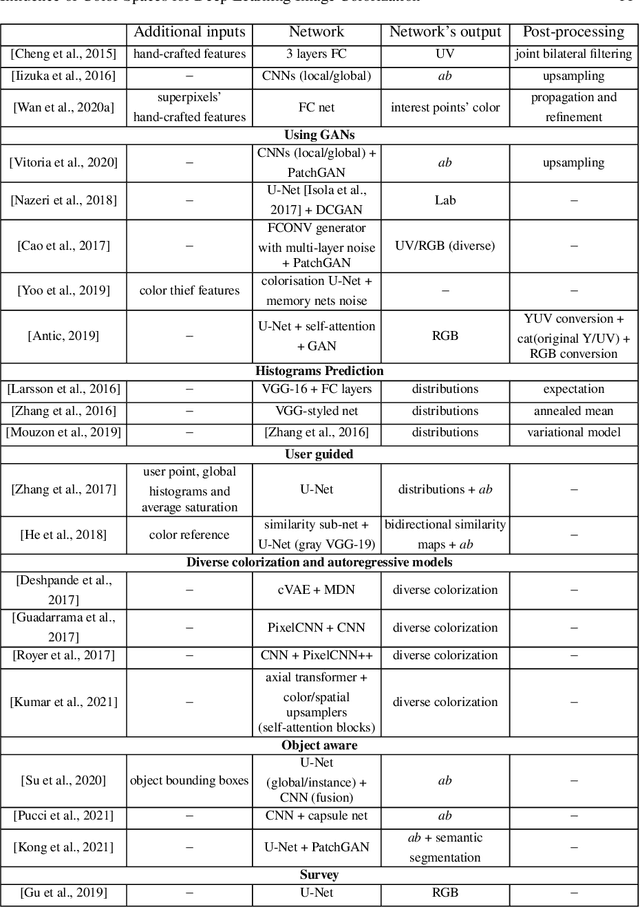
Abstract:Colorization is a process that converts a grayscale image into a color one that looks as natural as possible. Over the years this task has received a lot of attention. Existing colorization methods rely on different color spaces: RGB, YUV, Lab, etc. In this chapter, we aim to study their influence on the results obtained by training a deep neural network, to answer the question: "Is it crucial to correctly choose the right color space in deep-learning based colorization?". First, we briefly summarize the literature and, in particular, deep learning-based methods. We then compare the results obtained with the same deep neural network architecture with RGB, YUV and Lab color spaces. Qualitative and quantitative analysis do not conclude similarly on which color space is better. We then show the importance of carefully designing the architecture and evaluation protocols depending on the types of images that are being processed and their specificities: strong/small contours, few/many objects, recent/archive images.
 Add to Chrome
Add to Chrome Add to Firefox
Add to Firefox Add to Edge
Add to Edge